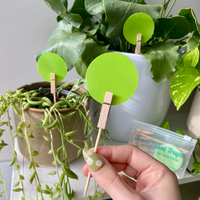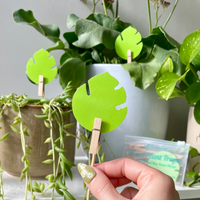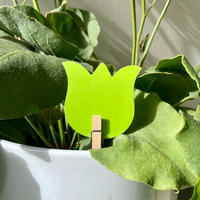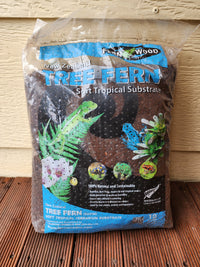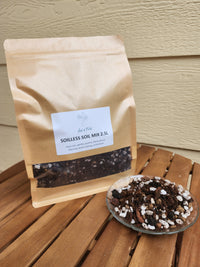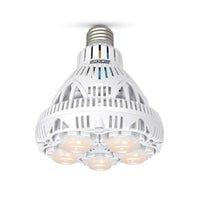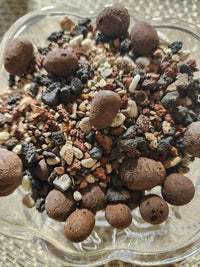Imagine providing every root in your indoor jungle with a perfect balance of air and moisture—Fernwood Tree Fern Fibre makes this possible. As Australia’s leading source for premium plant substrates, Leaf of Faith (leafoffaithsa.com.au) recommends this natural growing medium for enthusiasts seeking healthier, longer-lasting plants. In the sections ahead, you’ll discover what fernwood fibre is, where it comes from, its core benefits, practical applications for different plant types, and why our customers trust it for superior growth.
What is Fernwood Tree Fern Fibre and Why is It Ideal for Australian Plant Care?
Fernwood Tree Fern Fibre is a heat-treated, fibrous material derived from the stripped trunk of New Zealand tree ferns. Its loose, chunky structure resists compaction and holds just the right amount of moisture to suit Australia’s variable climate. By combining natural durability with pasteurisation, this substrate delivers reliable performance for indoor and tropical plants.
Key Characteristics:
- Chunky, interlocking fibres that promote air pockets
- Heat-pasteurised for hygiene and pest control
- Slow-decomposing to maintain structure for years
What Makes Fernwood Tree Fern Fibre Unique as a Growing Medium?
Fernwood Tree Fern Fibre stands out because its coarse network of fibres creates continuous channels for oxygen and water movement. This mechanism prevents soil compaction, supports active root respiration and reduces the risk of root rot—essential factors for Australian indoor gardens facing dry spells or heavy watering routines.
Tracing this natural structure points to its origin and sustainable harvest practices.
Where Does Fernwood Tree Fern Fibre Come From?
Fernwood Fibre is harvested from mature tree ferns as part of a sustainable trimming process that repurposes natural materials that would otherwise go unused. Each batch is carefully heat-treated to ensure it's free from pests and pathogens, supporting an eco-conscious supply chain that benefits both growers and their plants.
Sustainable Sourcing and Plant Health
Studies on sustainable harvesting practices show that utilising by-products from forest management, such as tree fern trimming, can minimise waste and promote forest health. This approach provides a renewable resource for growing media while supporting environmental sustainability.
Having explored its origin, we can see why these fibres deliver outstanding plant health outcomes.
What Are the Key Benefits of Using Fernwood Tree Fern Fibre for Plants?
Fernwood Tree Fern Fibre provides four primary advantages—superior aeration, consistent moisture retention, sustainable longevity and a pest-free environment—that translate directly into robust, resilient plants.
| Benefit | Mechanism | Plant Outcome |
|---|---|---|
| Aeration | Fibrous texture | Strong, oxygenated roots |
| Moisture retention | Sponge-like fibres | Even hydration cycles |
| Durability | Slow decomposition | Extended repotting intervals |
| Pest-free environment | Heat pasteurization | Reduced disease risk |
These combined benefits make Fernwood Fibre an exceptional choice for diverse plant care challenges, from delicate orchids to hearty aroids.
How Does Fernwood Fibre Improve Aeration and Drainage for Healthy Roots?
Fernwood Fibre’s open-fibre matrix creates continuous air spaces around root zones, which speeds up gas exchange and prevents waterlogging. This structure reduces compaction common in standard potting mixes, helping roots absorb nutrients and grow vigorously.
Tree Fern Fibre and Aeration
Research indicates that the chunky, fibrous structure of certain growing media, like tree fern fibre, significantly improves aeration and drainage in potting mixes. This structure creates air pockets that support healthy root respiration and reduce the risk of root rot, which is crucial for plant health.
Recognising this root-level support leads us to examine its moisture-holding capacity.
Why Is Moisture Retention Important and How Does Fernwood Fibre Deliver It?
Maintaining consistent moisture without oversaturation is crucial to avoid stress and fungal issues. Fernwood Fibre acts like a natural sponge, absorbing excess water then releasing it gradually as roots demand hydration. This balance ensures plants receive steady moisture—even during dry spells—while unwanted water drains away.
The long-lasting nature of these fibres also underpins ongoing plant health and sustainability.
How Does Fernwood Fibre Support Long-Lasting and Sustainable Plant Care?
Because tree fern fibres decompose slowly, a single layer can remain effective for years, reducing the need for frequent repotting. This durability pairs with eco-friendly sourcing: pruning tree ferns promotes forest health and minimises waste. Integrating Fernwood Fibre is both a practical and responsible choice for Australian growers.
Ensuring plant health also requires a hygienic substrate free of pests and pathogens.
How Does Pasteurisation Make Fernwood Fibre Pest and Pathogen Free?
Each batch of Fernwood Fibre undergoes controlled heat-treatment, which eradicates unwanted insects, fungal spores and bacteria. As a result, gardeners can repot or propagate without fear of introducing pests into new or existing collections. This step completes the clean-growth cycle suited to premium plant care.
How Can You Use Fernwood Tree Fern Fibre for Different Plants and Applications?

From aroids to hydroponics, Fernwood Fibre adapts seamlessly to a wide range of horticultural needs. Its versatility makes it a go-to substrate for enthusiasts who demand both performance and sustainability in their plant care routines.
Why Is Fernwood Fibre Ideal for Aroids, Orchids, and Tropical Plants?
Epiphytic and tropical species such as Monstera, Philodendron and orchids thrive in airy, well-drained conditions that replicate their natural habitats. Fernwood Fibre offers the precise balance of moisture and ventilation these plants require, promoting aerial root attachment and healthy leaf growth.
How Do You Incorporate Fernwood Fibre into Potting Mixes?
To enhance soil structure, mix 20–40% Fernwood Fibre into your regular potting mix.
- Measure fibre equal to one-third of the total mix volume.
- Combine thoroughly with peat, perlite or bark pieces.
- Adjust water retention by varying fibre proportions
Blending these ingredients improves drainage, airflow and moisture control for all container plants.
Once you’ve mastered the mix, Fernwood Fibre also excels in support structures.
What Are the Steps to Build Moss Poles Using Fernwood Fibre?
- Secure a moss pole or sturdy stake inside the pot.
- Wrap the pole with sheets of coconut coir or sphagnum moss.
- Pack Fernwood Fibre firmly around the moss layer to fill gaps.
- Mist the fibre regularly to maintain humidity for aerial roots.
Built this way, moss poles offer a living support that encourages climbing plants to thrive.
Can Fernwood Fibre Be Used for Propagation and Hydroponics?
Yes, its sterile fibres create an ideal environment for cutting roots to develop without soil. In hydroponic setups, chopped Fernwood Fibre anchors plants while allowing nutrient solutions to circulate freely. This versatility bridges traditional and modern growing techniques under one substrate.
Why Does Leaf of Faith Recommend Fernwood Tree Fern Fibre for Premium Plant Care?
Leaf of Faith believes in sourcing only the most effective and sustainable products for Australian plant enthusiasts. Our recommendation of Fernwood Fibre reflects years of testing and customer feedback, demonstrating unmatched plant performance.
What Is Leaf of Faith’s Commitment to Quality and Sustainability?
As an Australian-owned online store, Leaf of Faith partners with suppliers who follow ethical harvest and quality control standards. We verify heat-treatment processes, packaging integrity and product consistency to ensure every order meets our premium care criteria.
This dedication is echoed in the experiences of our satisfied customers.
What Are the Most Common Questions About Fernwood Tree Fern Fibre?
Gardeners often seek clarity on watering schedules, media comparisons and repotting guidelines when using Fernwood Fibre to achieve consistent results.
How Often Should You Water Plants Using Fernwood Fibre?
Water on an as-needed basis, typically when the top 2–3 cm of the fibre mix begins to feel dry. This approach leverages the substrate’s moisture retention without risking waterlogging. Adjust frequency according to plant type and environmental conditions for optimal hydration.
How Does Fernwood Fibre Compare to Other Growing Media Like Sphagnum Moss or Coco Coir?
Compared to sphagnum moss, Fernwood Fibre offers greater durability and better drainage, while retaining moisture more evenly than coarse coco coir. Its slow decomposition rate also means fewer reports than with rapidly breaking-down media.
When Should You Repot Plants Using Fernwood Fibre?
Repot only when roots begin to outgrow the container or when the fibre loses structure—usually every 2–4 years. The long-lasting nature of the substrate extends repotting intervals, saving time and reducing plant stress.
Leaf of Faith invites you to experience the difference Fernwood Tree Fern Fibre brings to your indoor gardens. Explore our range at leafoffaithsa.com.au and discover why enthusiasts trust this sustainable, high-performance growing medium for premium plant care.


